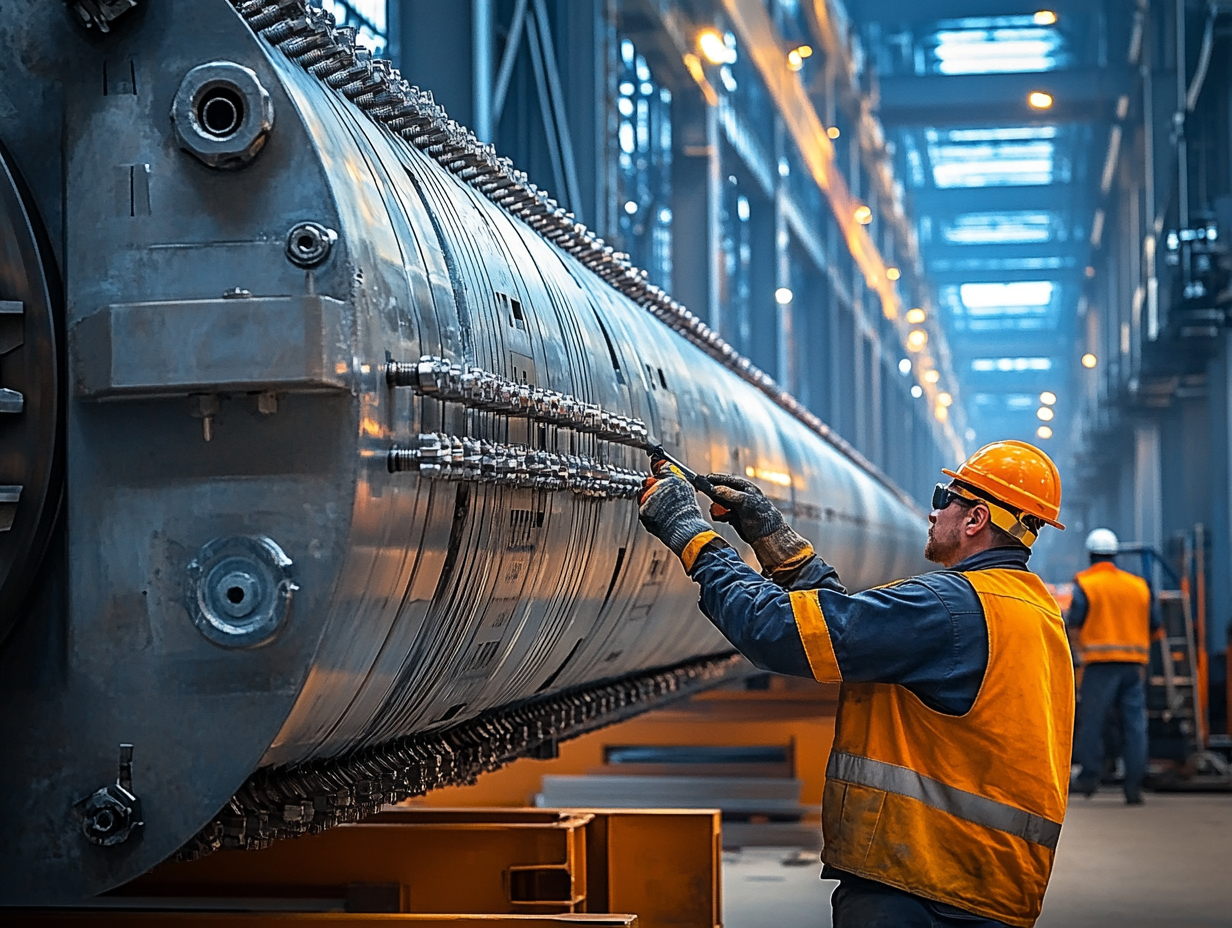

Bolted connections are essential in steel construction, providing strength, flexibility, and ease of assembly. These connections allow for structural integrity while facilitating maintenance and modifications. In this blog, we explore the types, advantages, and applications of bolted connections in steel structures.
- What Are Bolted Connections in Steel Structures?
✔ A bolted connection consists of steel plates and high-strength bolts, allowing components to be securely fastened.
✔ Used in bridges, industrial buildings, high-rise structures, and machinery installations.
✔ Preferred for ease of assembly, disassembly, and structural modifications.
- Types of Bolted Connections
- a) Bearing-Type Bolted Connections
✔ Transfers force through direct contact between the bolt and hole surface.
✔ Used in low to medium-load applications.
✖ Requires tight hole clearance to prevent excessive deformation.
- b) Friction-Type Bolted Connections
✔ Transfers force through friction between connected plates.
✔ Uses preloaded high-strength bolts to resist shear forces.
✔ Common in high-load applications such as bridges and heavy machinery.
- c) Preloaded Bolted Connections
✔ Bolts are tightened to generate clamping force, improving fatigue resistance.
✔ Reduces looseness and movement under dynamic loads.
✔ Required in structural connections subjected to high vibrations.
- Advantages of Bolted Connections
✔ Fast and Simple Installation
- Requires less specialized labor than welding.
- Allows for modular construction, reducing build time.
✔ Easy Maintenance and Replacement
- Bolts can be removed and replaced without damaging the structure.
- Ideal for temporary structures or future expansions.
✔ Strong and Durable Performance
- With proper design, bolted joints withstand high loads and vibrations.
- Reduces the risk of material fatigue compared to welded joints.
✔ No Heat-Affected Zones
- Unlike welding, bolted connections preserve material properties without thermal stress.
- Key Considerations for Bolted Connections
✔ Bolt Grade and Material Selection
- High-strength bolts (e.g., ISO 898-1 10.9 grade) provide better load-bearing capacity.
- Corrosion-resistant coatings prevent rust and environmental damage.
✔ Proper Hole Sizing and Alignment
- Misaligned bolt holes cause shear stress and early failures.
- Tolerance levels should match ISO or DIN standards for precision.
✔ Correct Torque and Preload Application
- Insufficient torque leads to loosening under vibration.
- Over-tightening can cause bolt failure due to excessive stress.
- Applications of Bolted Connections in Steel Construction
✔ Bridges and Infrastructure Projects
✔ High-Rise Buildings and Industrial Plants
✔ Steel Frame Structures for Factories and Warehouses
✔ Transmission Towers and Offshore Platforms
✔ Cranes, Heavy Machinery, and Conveyor Systems
Bolted connections provide structural reliability, flexibility, and ease of assembly, making them indispensable in modern steel construction. By selecting the right bolt type, applying proper installation techniques, and ensuring regular inspections, businesses can enhance safety and durability in structural projects.

